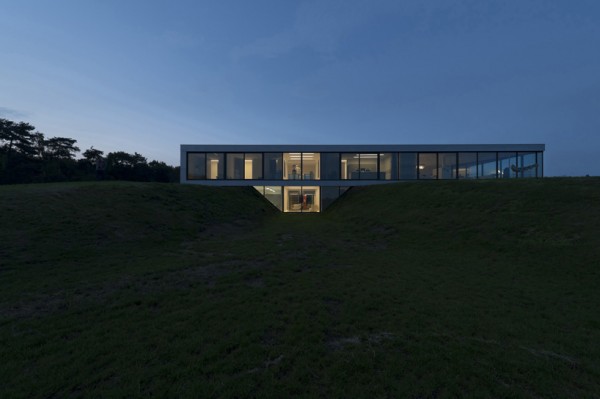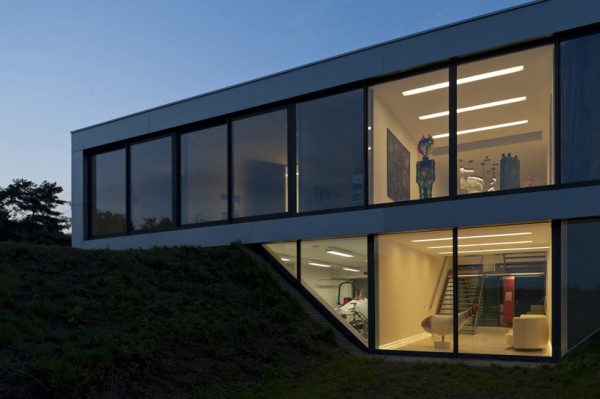The goal of many green designs for houses is to make them appear part of the landscape. In the Netherlands, the firm 123DV has created a home that is far too linear to be called organic, but still manages to feel as it is part of the hill upon which it sits, especially since the hill itself is also man-made.
The “Bridge House,” as it is known, is located on a wide, grassy knoll in a park near the town of Achterhoek. Like most of the landscape in the Netherlands, it has been shaped by both new and ancient human forces. Though the house is utterly modern in shape and design, it uses the traditional Dutch “terp” method of building a low mound and partially embedding the cellar in the earth to harness the geothermal properties of the surrounding soil.

The simple box shape appears to sit lightly atop the hill, but it is truly part of the earthworks, with most of the lower floor buried in the terp mound. Only a small trapezoidal section of the foundation is revealed in a shallow trough that is cut into the gently sloping hillside, framing the house’s main entrance.

The original intent of the terp style of building was to protect houses and entire villages from incoming tides before the massive dike systems of Holland were constructed. Today, the terps are used more for temperature control. By harnessing the earth’s thermal storage properties, the half-buried house is kept cool in the summer and warm in winter without needing extra electricity.

In fact, the Bridge House has enough green design elements to be completely self-sufficient, should the need arise. In addition to the geothermal system in the roof and marble floors, drinking water is supplied by an on-site well, solar panels supply all the needed electricity, wastewater is treated in a septic field, and rainwater is collected for reuse on the landscaping, which includes wildflowers, 1,000 rhododendrons and 17,000 trees that were all planted on the property by hand.
Even the extensive use of floor-to-ceiling glass—always a thermal bane of modern design—is mitigated somewhat by the inclusion of “heat-mirror glass.” This double-paned glass includes a reflective coating that reflects part of the sun’s rays and blocks excess heat from entering.